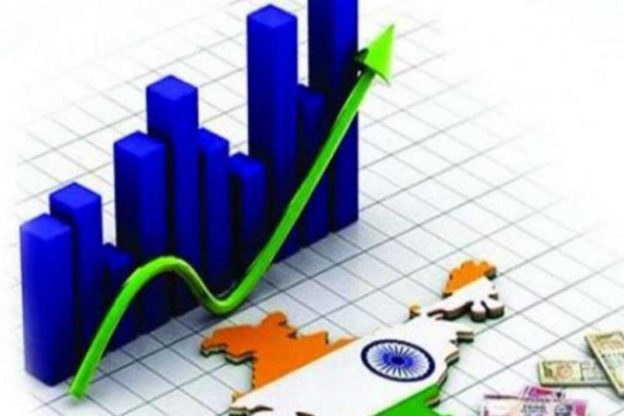Jefferies says the Indian economy, in the years ahead, is likely to repeat the high growth of 8.5-9% witnessed during 2003-2010 based on a host of drivers.
The Indian economy is likely to see a repeat of its stellar performance achieved during 2003-2010 which was led by corporate profitability, home sales, and lower bad assets, according to global brokerage Jefferies.
India’s GDP clocked growth of 8.5%-9% between 2003-2010 up from 5.5%-6% before that.
Jefferies analysis is based on six key drivers of the economic cycle namely housing sales, fall in bad loans of banks, corporate leverage and capes revival.
“Between 1997 and 2004, bank gross NPA ratio moved down from 16% to 8%. Similarly, the Indian banking system’s gross NPA has moved down from 12% in March 2018 to 7% now and alongside a provisioning jump, the net NPAs are down 59%,” the US brokerage said.
“Provision costs are off drastically. While banks are still risk-averse, we believe that the stage is now set for an increase in risk appetite. Strong capability and seven-year high RoEs further support lending growth,” it added.
The broader capex cycle has not turned yet but it is likely to follow the housing boom with a lag, it added.
Jefferies said there is an improvement in housing cycle. Analysis since 1996-1997 shows that up-cycles and down-cycles in the Indian housing sector last for 6-8 years typically. The recent prolonged downcycle lasted from 2012-2013 and 2020 while 2021 marked the beginning of an upcycle in the sector with significant improvement in volumes and pricing. Construction of houses leads to huge job creation and has multiple linkages capable of driving an economic upturn, it added.
This combined with a major improvement in corporate profitability will push growth upwards. Annual corporate profits between FY11 and FY20 was a meagre 0.4% which has increased to 51% between FY20 and FY22.
Jefferies expects financials and cyclical sectors to lead this recovery to further increase to 15% between FY20 and FY24.
Corporate debt has come down as companies decelerated during the downcycle during the last six years. Debt to equity ratio of over 600 companies non-financial companies has come down to 0.7 times from 1 during the period, creating the space for next upcycle.
Interest are set to rise from current low levels but that is unlikely to hit economic recovery despite a rise in yields as it did in 2003-2010. “Corporate investment is still sluggish as capacity utilisation and risk appetite is low. Property uptick should help reduce risk averseness. Overall, the broader capex upturn should follow over the next 4-6 quarters,” the US brokerage said.
https://www.timesnownews.com/business-economy/economy/article/indias-economy-likely-to-see-repeat-of-2003-10-acche-din-us-brokerage/823935





